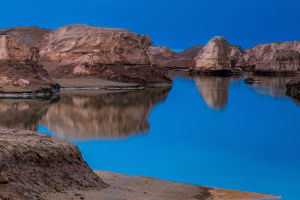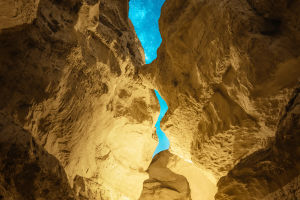Reflection photography is a unique and beautiful style of capturing images that involves stationary objects reflected off water or glass surfaces. It is not limited to just landscapes, as city buildings and other structures can also create stunning reflections against the sky.
The art of photography is all about capturing the play of light and shadow, and reflection photography is the perfect embodiment of this perspective. By using reflections, we can make simple compositions more complex and abstract, creating a more artistic and engaging photograph.
1. Master the shooting angle
One of the most important techniques to consider when capturing reflection photographs is to master the shooting angle.
The angle between the camera and the water surface plays a significant role in how the reflection will be presented in the final image. By adjusting the angle, we can change the appearance of the reflection, making it more or less prominent in the picture.
The amount of reflection in the picture is inversely proportional to the height of the viewpoint. In addition, the size of the reflective surface will also play a role. For example, because of the limited area covered by Jishui, it is even more necessary to actively find a suitable shooting angle in order to present the ideal picture in mind.
2. Choose the right time to shoot
Another important aspect to consider is the best time to shoot. Generally, the calmer the water surface, the more prominent the reflective surface. Therefore, shooting during periods of calm water, when there are few waves, will help to create a sharper reflection.
The early morning is a great time to shoot, as the light is soft and there is little wind. During this time, the temperature is usually low, and the light difference is small, making it easier to capture sharp and clear reflections.
3. Choose the right background
When shooting reflections, choosing the right background is crucial. The background can make the reflection stand out or be more interesting. For example, when shooting the reflection of a building, choosing an interesting building or the sky as the background can make the picture more vivid.
4. Pay attention to the use of light
Light plays a vital role in the quality and performance of reflection photographs.
Using light with strong contrast, such as the light at sunrise or sunset, can make the layering of reflections more obvious. Paying attention to the use of light can make the reflections clearer and full of luster, creating a more dynamic and engaging photograph.
5. Use the right equipment and accessories
Shooting reflections is much easier and more successful with the right equipment and accessories.
For example, using a tripod can stabilize the camera and avoid shaking caused by hand-held photography. Additionally, using a polarizing filter can effectively reduce reflections and reflections, making reflections clearer.
Reflection photography is a beautiful and unique style of capturing images. By mastering the shooting angle, choosing the right time to shoot, selecting the right background, paying attention to the use of light, and using the right equipment and accessories, we can create stunning reflection photographs.


